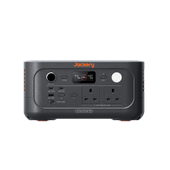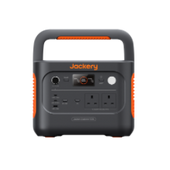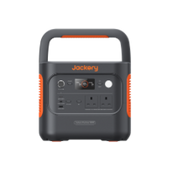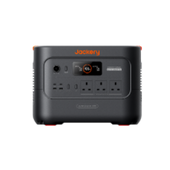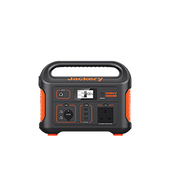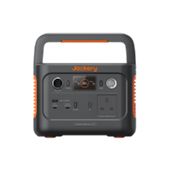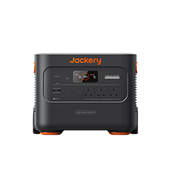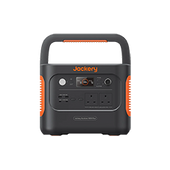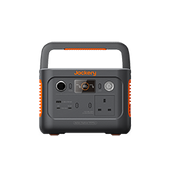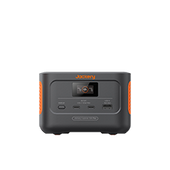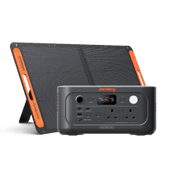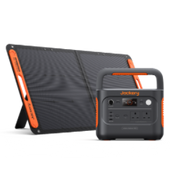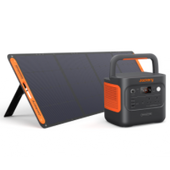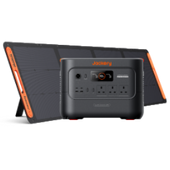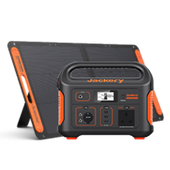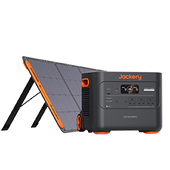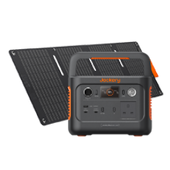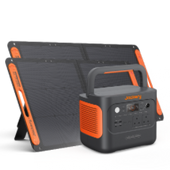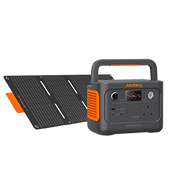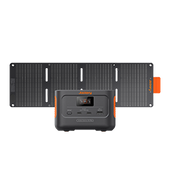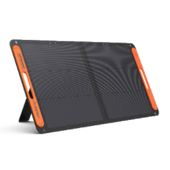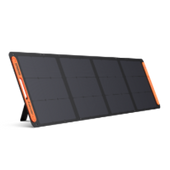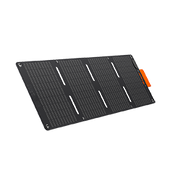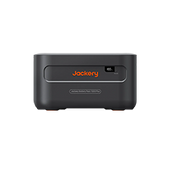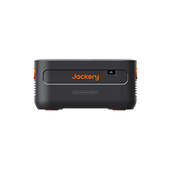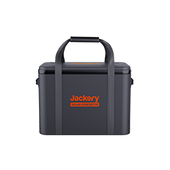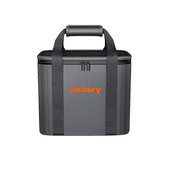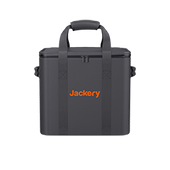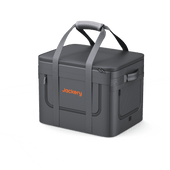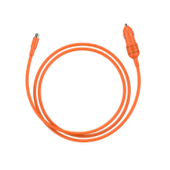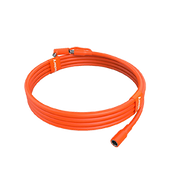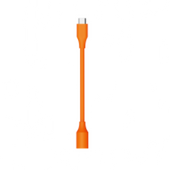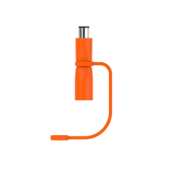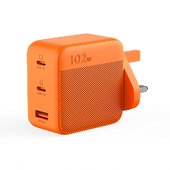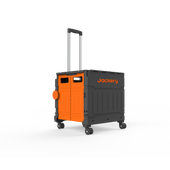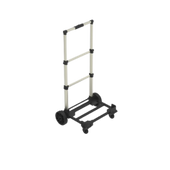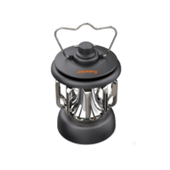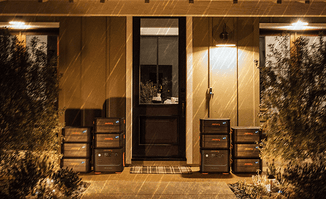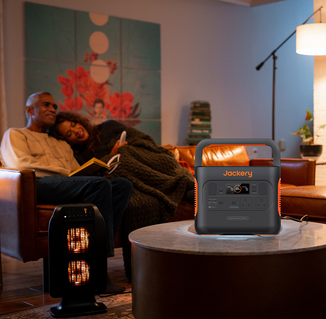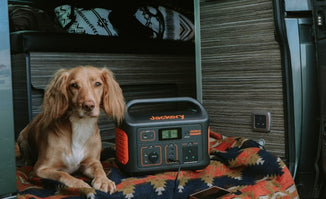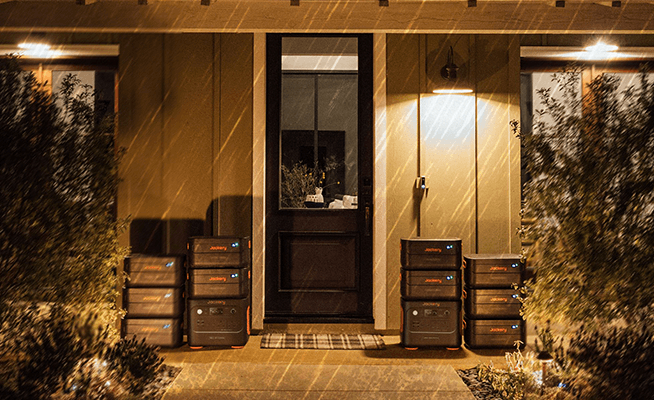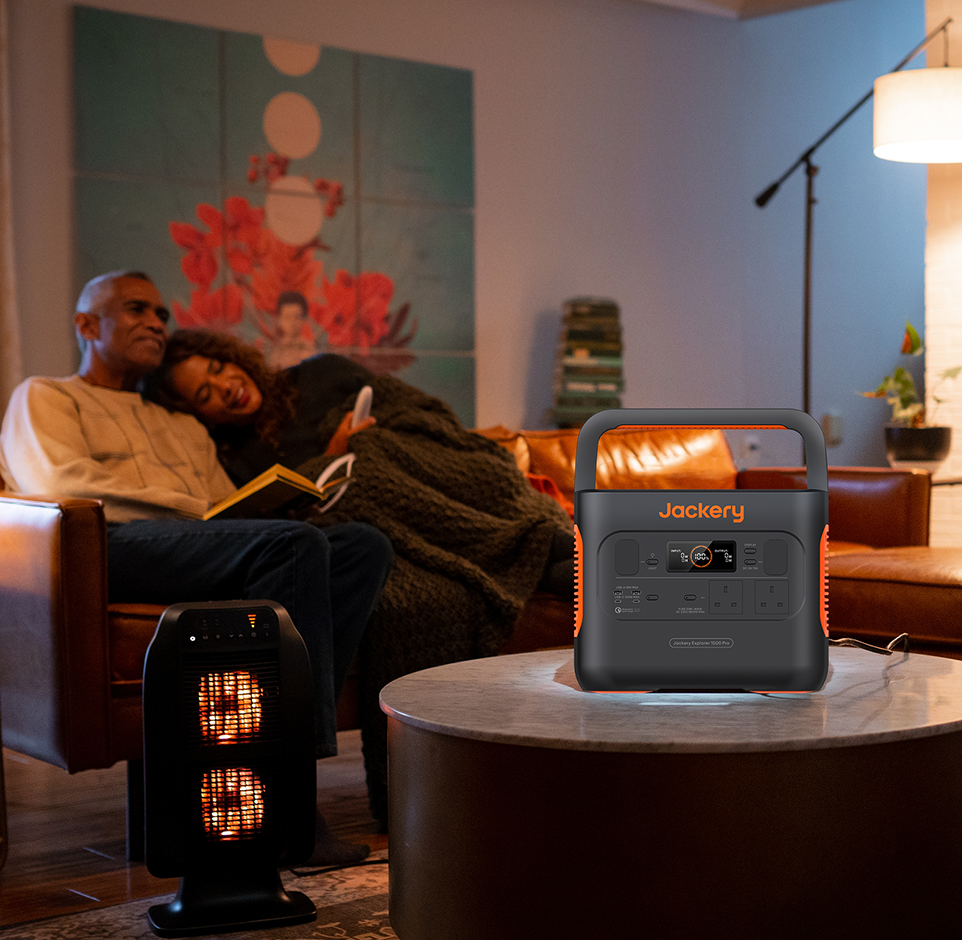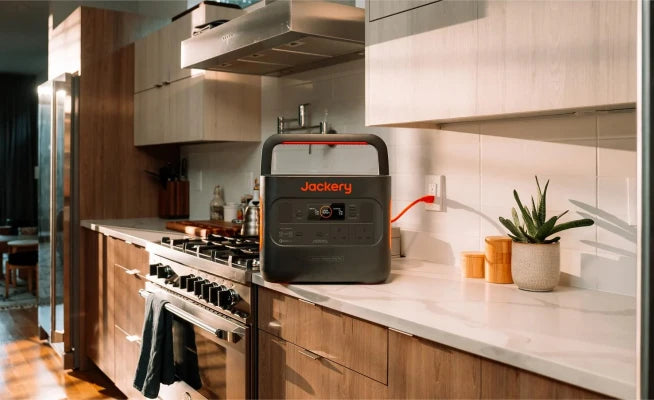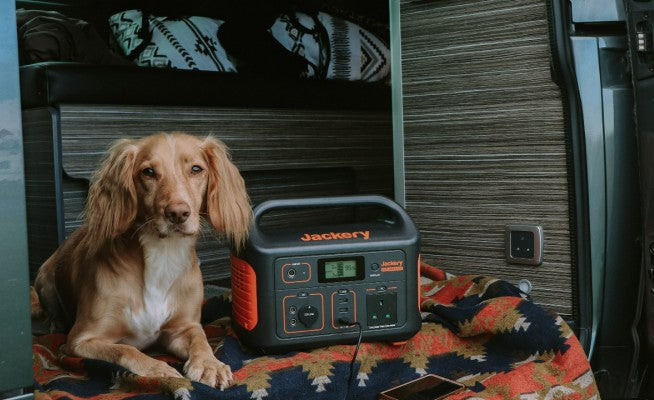The Ultimate Guide to Solar Panel Hail Damage
Rough weather, like thunderstorms, hurricanes, hailstones, and blizzards, is a significant risk for solar panels. Although some solar panels can withstand mild hail, the risk of solar panel hail damage is high during severe hailstorms.
The good news is that advanced options like Jackery SolarSaga Solar Panels can eliminate the stress of hail damage. These solar panels, built with IP67 or IP68 waterproofing technology, can withstand wet and harsh weather.
Connecting Jackery SolarSaga Solar Panels with Explorer Portable Power Stations will help you charge all your home or outdoor appliances without worrying about harsh weather. These off-grid solar systems are incredibly rugged and capable of withstanding most hailstorms.
|
 |
|
| - Excellent solar conversion efficiency of 24.3% - IP67 waterproof and dustproof rating to protect against harsh weather - ETFE-laminated case to extend panel lifespan - Portable and flexible solar panels ideal for outdoor adventures - Made with monocrystalline solar cells and a honeycomb light-trapping design |
What Is Hail?
Hail consists of solid ice formed inside thunderstorms. When updrafts lift raindrops into the cold atmosphere, they freeze and form hailstones. These stones then grow by colliding with liquid water drops, which freeze on the hailstone's surface.
When the updrafts weaken or cannot support the stone's weight, hailstones fall on the earth and cause hail damage to solar panels. Hail generally travels at speeds between 10 mph to 75 mph. However, larger hailstones usually travel faster and can cause more solar panel hail damage.
Why Can Hail Damage The Solar Panels? What Solar Panel Hail Damages?
Hail can cause solar equipment damage and reduce solar panel performance. During severe hailstones, the silicon wafers or solar cells on traditional solar panels can get scratched or cracked. Here are the main reasons why hail is a significant concern for solar panels.
- Solar Equipment Damage: While the thick layer of tempered glass can handle a substantial amount of hard impact, severe and heavy storms can cause solar equipment damage.
- Reduced Performance: When cracks and scratches appear on a module's surface, it reduces the efficiency and performance of the solar panels.
- Warranty Limitations: Most solar panel warranties do not cover hailstorm as it falls under the "environmental factors" category. If you live in an area prone to experiencing hail, it's better to check if the warranty covers hail damage.
The best way to protect your solar system from hail damage is to check the extent of disruption after a hail storm.
Whenever there is significant damage caused to your solar system, it can be easily detected by your inverter. Often, the inverter's display screen turns out to be red, indicating no power generation.
The next method to detect hail damage is visually inspecting from a distance. This method works best if your solar panel is smashed or damaged.
How To Protect Solar Panels From Hail Damage?
Solar or photovoltaic panels for homes are the most critical component of your solar power system. These panels work by collecting and converting sunlight into electricity. Extreme weather conditions can sometimes damage your solar panels. Fortunately, there are ways to protect them from the worst hailstorms.
Invest in Solar Panels with IP68 Technology
Buying resilient panels is the first step to protect solar panels from hail damage. Although most panels manufactured today are relatively rigid, solar panels built with IP68 technology can withstand severe hailstorms.
Jackery SolarSaga Solar Panels have IP67 and IP68 rating that ensures these panels are dustproof and waterproof. Hence, they offer robust protection from cracking and leaks caused by hailstones or other unwanted weather conditions.
Durable Solar Batteries
Most homeowners use solar panels with power stations or battery backups to charge their appliances with uninterrupted electricity. Besides buying solar panels with IP68 technology, it's important to choose durable solar batteries that provide the best protection against heavy impact.
Jackery power stations are robust and built with 12 layers of protection. They have 9 temperature sensors and offer top shock-resistant level 9 for maximum safety. All solar batteries have built-in inverters, ensuring the perfect blend of durability, convenience, power, and security.
Use Protective Covers
Consider using protective covers if you're concerned about protecting solar panels and battery backup. Hard cases are designed to withstand the full force of hail stones or other weather events. However, you'll need to remove these cases once the storm passes, helping solar cells to convert solar energy to electricity.
Adjust Panel Angles
Positioning becomes crucial if you've fixed solar panels when seeking protection against hail damage. However, that's not true with portable solar panels and power stations. When the weather forecast predicts hail, you can break down and store the portable solar panels inside for safekeeping.
Regular Panel Inspection
Small cracks can quickly become big. Regular inspection can help prevent the hail damage solar panels from spreading from cells to fully intact panels.
Follow Weather Forecast
One crucial step to preparing for hailstorms is knowing when it's time to act. When you know there are chances of hailstorms, you can cover the panels or safely store them under the shed.
Use Wire Mesh
A wire gauge mesh provides a barrier to protect the panels against large hailstones. While selecting the wire mesh, you must choose one with big holes that let sunlight pass while protecting the solar panel.

Source: National Renewable Energy Laboratory (NREL) Report
What To Do If Solar Panels Are Damaged?
Damage to solar panels from hail is usually a rare instance. However, if it happens, you must contact the manufacturer and replace your solar panels. If your solar panels are under the warranty period, you'll have to check with the manufacturer from where you purchased them.
For instance, Jackery SolarSaga Solar Panels have a 2 + 1 warranty. Most Jackery products are eligible for warranty extension, ensuring you can use clean and safe energy for years.
Jackery Solar Panels With High-Quality
Jackery Solar Panels are designed to provide maximum solar production all year. They are built with IBC solar technology, offering nearly 25% solar conversion efficiency.
These solar panels have IP67 or IP68 waterproof and dustproof ratings to protect the solar array from wet and harsh weather. In addition, the ETFE-laminated design makes solar panels extremely temperature and corrosion-resistant.
Jackery SolarSaga 200W Solar Panels
Jackery SolarSaga 200W Solar Panels offer an excellent solar conversion efficiency of 24.3%. It has IP67 waterproofing technology and an ETFE-laminated case to provide robust protection and extend its lifespan. It is portable and foldable, making these panels an ideal power source for home backup or outdoor travel.
Customer Review
"These are fantastically well-made panels! They feel and ARE really well made. The thought and build quality that went into them are something to be proud of. I use two of them to charge my Explorer 1500. The carrying case is super nice as well, and the cord is stored in an inside pocket that is built in." — Grant.
Jackery SolarSaga 100W Solar Panels
Jackery SolarSaga 100W Solar Panels are built with monocrystalline solar cells with a solar conversion efficiency of 24.3%. It weighs only 10.33 lbs and is ideally suited for emergency power outages and outdoor activities. It's lightweight, IP65 waterproof-rated, and foldable, which makes it ideal for off-the-grid adventures.
Customer Review
"I won't have to worry about sitting in the dark when the electricity goes off every time there is thunder. And with all the big storms these days, no one can live without a backup plan. Jackery designs quality and simple equipment. Easy to use. And the case is well made as well." — Herb Hochman.
Jackery SolarSaga 80W Solar Panels
The dual-sided Jackery SolarSaga 80W Solar Panels are designed with extra-white glass on the back of the panel. It has an industry-leading efficiency of 25%, ensuring most sunlight gets converted to electricity. It also features rubber bumpers on each corner, protecting the solar panels from accidental damage.

Customer Review
"I am very impressed with the new 80-watt solar panel. The water resistance rating is very high, and it is not in danger if accidentally rained upon. And morning dew is not a panel killer either. The built-in corner protection is beefy. The substantial water resistance means that it won't die if it gets morning dew on it or if it rains while I'm out on a hike." — Craig.
|
Series |
Peak Power |
Solar Power |
Dimensions |
Portable Power Station |
|
200W |
Power Voltage: 18V Power Current: 11.12A Open Circuit Voltage: 23.2V Short Circuit Current: 11.76A |
Folded: 21.2 x 24.2 x 1.6 in (540 x 615 x 40 mm) Unfolded: 21.2 x 91.3 x 1 in (540 x 2320 x 25 mm) |
Explorer 2000 Pro: Up to 6 Pcs (with 2 solar connectors) Explorer 1500 Pro: Up to 6 Pcs (with 2 solar connectors) Explorer 1500: Up to 2 Pcs Explorer 1000 Pro: Up to 4 Pcs (with 2 solar connectors) Explorer 1000: Up to 1 Pc Explorer 500: Up to 1 Pc Explorer 240: Up to 1 Pc |
|
|
100W |
Power Voltage: 18V Power Current: 5.55A Open Circuit Voltage: 21.6V Short Circuit Current: 6A |
Folded: 24 x 21 x 1.4 in (or 610 x 535 x 35 mm) Unfolded: 48 x 21 x 0.2 in (or 1220 x 535 x 5 mm) |
Explorer 2000 Pro: Up to 6 Pcs(with 2 solar connectors) Explorer 1500 Pro: Up to 6 Pcs (with 2 solar connectors) Explorer 1500: Up to 2 Pcs Explorer 1000 Pro: Up to 4 Pcs (with 2 solar connectors) Explorer 1000: Up to 2 Pcs Explorer 500: Up to 1 Pc Explorer 240: Up to 1 Pc |
|
|
80W |
Power Voltage: 22V Power Current: 3.6A Open Circuit Voltage: 28.5V Short Circuit Current: 3.71A |
Folded: 35.67 x 20.79 x 1.06 in (906 x 528 x 27 mm) Unfolded: 35.67 x 20.79 x 1.06 in (906 x 528 x 27 mm) |
Explorer 2000 Pro: Up to 10 pcs (with 2 solar connectors) Explorer 1500 Pro: Up to 12 Pcs (with 2 solar connectors) Explorer 1500: Up to 4 Pcs (with 2 solar connectors) Explorer 1000 Pro: Up to 12 Pcs (with 2 solar connectors) Explorer 1000: Up to 1 Pc Explorer 500: Up to 1 Pc Explorer 240: Up to 1 Pc |
Solar Panel Hail Damage FAQs
What size of solar panel do I need for severe weather?
The size and number of solar power panels will depend on the battery capacity you want to charge. For instance, if you're going to power a 1000 watts battery, you'll need to choose 5*200 watts solar panels.
Example: In this instance, we assume you're using Jackery SolarSaga 200W Solar Panels to charge Explorer 2000 Pro. Using the Jackery Solar Panel calculator, we can determine the battery charging time required to power Explorer 2000 Pro Portable Power Station using 6*Jackery SolarSaga 200W Solar Panels.
Once fully charged, you can charge multiple electrical devices using Jackery Explorer 2000 Pro Portable Power Station.
Working Time = Capacity in Wh × 0.85 / Operating wattage of the device
= 2160Wh × 0.85 / 1000W = 1.8H
This means Jackery Explorer 2000 Pro will supply consistent electricity to electrical appliances of 1000 watts.
How to estimate hail size?
Hailstorms are of different sizes, and only the largest hailstones pose severe risks to solar panels. Here we compare the hail size with a known object.
Quarter = 1 inch — hail quarter size or larger is considered severe
Ping-Pong Ball = 1 ½ inch
Softball = 4 inches
Golf Ball = 1 ¾ inches
Tennis Ball = 2 ½ inches
Baseball = 2 ¾ inches
Pea = ¼ inch diameter
Mothball = ½ inch diameter
Penny = ¾ inch diameter
Nickel = ⅞ inch
Tea cup = 3 inches
Grapefruit = 4 ½ inches
How to prevent damage from hail or any severe weather?
The simple answer to "how to protect solar panels from hail damage" is investing in high-quality solar generators.
Jackery Solar Generators provide a reliable, clean, and green energy solution to power appliances. These generators combine Jackery SolarSaga Solar Panels and Explorer Portable Power Stations, known for their robust nature.
The fully upgraded BMS technology features an embedded security chip, 12 forms of protection, and a 30% improved heat dissipation efficiency.
Final Thoughts
Most modern solar panels and power stations can withstand hail damage. Severe weather with significant hail storms is likely to damage the upper surface of the solar panel. However, it's worthwhile to follow precautionary measures to prevent solar panel hail damage.
Jackery provides high-quality, highly-efficient solar panels and power stations built with IP68 technology and ETFE-laminated design. Jackery Solar Generators are portable, flexible, and rigid charging solutions for most home or outdoor appliances.

